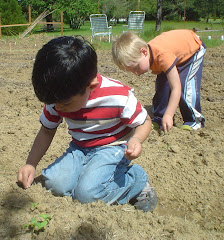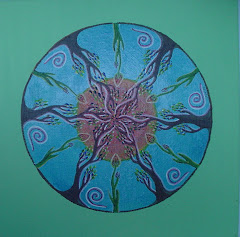 |
| Chervena Chuska sweet peppers |
Hello friends and supporters of the Sharing Gardens, near and far -
We
realize it's been literally months since we've posted anything new on
our site. So much great stuff has been happening that we've been feeling
too overwhelmed to write! What follows is the
really big news.
We promise we'll fill in details and share photos and highlights from
the 2013 growing season as soon as we can, but for now...
The most exciting development is that
we're buying the land
we've been gardening on for the past four years in Monroe! The
property is about three and half acres (we've been growing food on about
2/3 of an acre up till now). It has two existing sheds and a farmhouse
built in 1875 (it's the second oldest house in Monroe). There's a deep,
strong well that produces delicious abundant water and an artesian
spring that brings water right to the surface. The farmhouse is
two-stories high and will need a lot of work (it's been unoccupied for
about seven years and heavily vandalized.) But it's "bones" are solid
and it's got great soul. We've already begun renovations and it's going
to be a sweet place to live.
 |
| The 1875 farmhouse. |
 |
| Back side of farmhouse |
The majority of the land has been pasture/grass. Now
that we know we can stay, we're preparing ground to put in fruit and nut
trees and berry bushes. Our local friend and supporter, David Crosby
(not the rock star!) has been helping us find nursery stock to get us
going. Eugene Wholesale Nursery is providing us with 33 trees, 6' to 8'
tall (apples, pears and plums) at three dollars apiece! They're the
"seconds" so some may be shaped a little funny till we get them pruned
up right. David has also helped us connect with Fall Creek Nursery who
specializes in blueberries. These folks have made an outright donation
of three dozen bushes, specially selected for our growing conditions
(that will be three, fifty-foot rows). We also want to plant figs and
seedless grapes. Please let us know if you have a lead on where we can
get some cuttings locally and we'll root a bunch to share.
(Please see our complete wish list to see how your cast-offs can become Sharing Gardens treasures.)
 |
| Most of the original square nails are still holding the farmhouse together! |
Some of the plans for the land are still
developing... There's a low part of the land that might be perfect to
grow cane-willow (for basket weaving) and bamboo (for various purposes).
Our neighbor has been encouraging the native Camus lily to re-establish
itself on his wetlands and we too want to encourage native species to
regain a foothold. We've started a hedgerow of Rosa Rugosa - which will
provide giant rosehips for both humans and wildlife and we've managed to
establish five American chestnuts (endangered on the East coast).
Chestnuts also provide food for people and our animal friends.
 |
| Tree planting--a sign of hope. |
We are very grateful to the Crowson family (the
previous owners of the land). Chester (the patriarch of the clan) was
the one we first approached about using the land for free. He really
loved our project and gave us his full support--even paying to have a
new pump installed in the well and paying the power-bill to keep the
pump running for these past four seasons. When he passed away in the
winter of 2012 we were a bit anxious about whether we would be allowed
to stay but his grown children were happy to carry on with the original
agreement. We always knew that the land was for sale and that, if it
ever sold that we would have to leave at the end of that year's growing
season. That's why we never planted fruit trees or invested much in
permanent improvements to the land or buildings.
At
first, when oldest son, Jerry Crowson told us that the family had to get
serious about selling the land, our hearts just fell. The original
asking price was way beyond anything we could afford. But then he told
us that they were dropping it by about 2/3 and it suddenly was within
our means! Much thanks too to Llyn's Dad, Bob Peabody who made the
finances available for us to purchase the land.
 |
| Sunny days in the bean patch |
Now we can really put down roots and expand our rural arts
school--offering hands on, practical experience in growing food
organically, canning and other forms of food preservation, vegetarian
cooking, basket-weaving and all the other aspects of our
Mission Statement. The Sharing Gardens will continue to thrive and grow providing a
common-ground gathering place dedicated to the
cultivation of generosity.
 |
| A great year for carrots...and kids! |
Thank you for all your support and help to encourage us along the way.
 Here's a beautiful video about the Sharing Gardens, just released by our friends at Peak Moment TV.
Filmed in July 2013 with the garden's bounty as backdrop, we explore
the philosophy that is at the root of the gardens: simple-living,
gratitude and giving without accounting. Enjoy!
Here's a beautiful video about the Sharing Gardens, just released by our friends at Peak Moment TV.
Filmed in July 2013 with the garden's bounty as backdrop, we explore
the philosophy that is at the root of the gardens: simple-living,
gratitude and giving without accounting. Enjoy!







































































